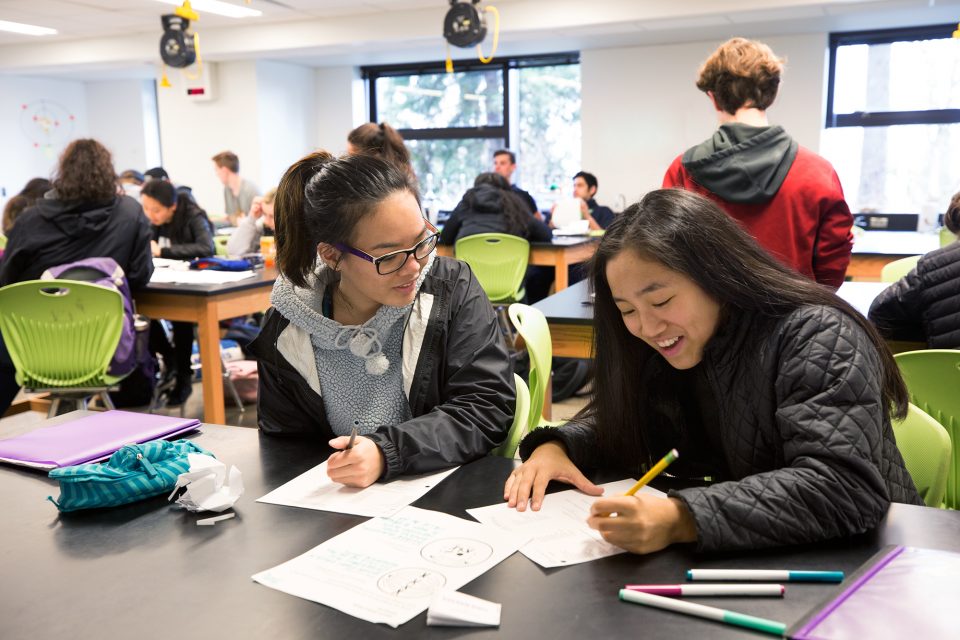Learning spaces that turn on the electricity as soon as students enter. Attendance taken the moment students step into class. Campus transportation that monitors student traffic in real-time to adjust supply as required. Insights to help educators and leaders tailor teaching strategies for students.
These are just some ways in which the Internet of Things (IoT) can help institutions efficiently manage facilities and energy, optimize teaching time for teachers, and enhance the learning experience — empowering students to thrive in a conducive learning environment.
Schools in Asia Pacific are already exploring ways to leverage IoT to enhance learning experiences. For example, Republic Polytechnic in Singapore adopted IoT technology to get a deeper understanding of students’ social and study habits, and uses the information to help improve students’ academic performance. The polytechnic also introduced a Smart Technology Exploration Lab to test-bed IoT projects that will contribute to a Smart Nation. In New Zealand, a university leveraged data gathered from their parking facilities and infrastructure to successfully lower first year student dropout rates and improve learning outcomes.
By bringing together technologies such as IoT, machine learning, analytics and big data, institutions are able to connect their campus to achieve extensive benefits. These technologies, however, may also bring with them several challenges for education institutions. Here are three issues schools may face with their implementations, and how technology partner with a comprehensive portfolio of end-to-end solutions can provide support:
1. Ensuring effectiveness of implementations
The rapidly evolving IoT and connectivity landscape makes it easy for Institutions and their IT teams to get caught up in the implementation of hardware, tools, services, and applications, and lose sight of the bigger goal: improving student learning outcomes.
Whether it is to enhance the learning experience or to save resources that can be directed towards improving the quality of education, schools need to leverage IoT technologies always with the student in mind. By conducting regular reviews of the implementation and gathering feedback, schools can help ensure the relevance and effectiveness of their IoT initiatives.
Collaborating with an end-to-end technology partner can make all the difference in unlocking valuable insights. With a comprehensive portfolio of tools, services, and applications, a partner can help make tailored recommendations, and deliver added support in monitoring effectiveness and making necessary refinements—to ensure an optimal learning environment for students.
2. Safeguarding student privacy as more data is collected
A connected campus collects a large amount of personal data including real-time student location, commute habits, and learning preferences. This information can help learning institutions understand their students better, and enable greater personalization of learning.
At the same time, the sensitive nature of the information means a data breach may impact the institution’s reputation, budgets, and recruitment. This, in turn, will affect the quality and quantity of resources that they can devote towards students. To safeguard student data, Institutions need to put in place the right data protection policies and measures before rolling out their initiatives.
Schools can tap technology partnerships to deploy solutions that keep student data protected and help them stay compliant with government regulation. An end-to-end technology partner can also support schools in developing a proactive data protection strategy that includes staff and student training, and a tailored incident response plan in case of compromise. This will provide all stakeholders peace of mind, allowing students, educators, and leaders to focus their efforts on improving learning.
3. Protecting valuable information against increasingly sophisticated threats
The education sector is one of the top targets of cyber-attacks, and the growing number of connected devices—many of which owned by students—can increase susceptibility to attacks. This is further compounded by the fact that IoT implementations often introduce multiple new vendors, who may open up security gaps that are hard to detect or resolve.
Protecting the sensitive information schools own, such as student records and valuable research, will require the institutions to take a holistic and comprehensive approach towards security. Instead of working with several vendors, schools should consider collaborating with an end-to-end partner to minimize security and privacy risks when implementing their connected campus initiatives.
An end-to-end partner will also provide core capabilities to continually review existing security measures, policies and strategies, empowering the institution to confidently plan and move ahead with transformation strategies that benefit students and their learning.
Creating connected experiences with the right partner
It is more important than ever for institutions to collaborate with the right technology partners that can help identify and overcome the potential challenges in a connected campus implementation. This will empower leaders, administrators and educators to focus on creating the best environment for students to flourish, instead of worrying about technology issues.
Microsoft and its ecosystem of partners are committed to collaborating with education institutions to bring connected campus experiences to life. Through in-depth conversations and thorough assessments, Microsoft and its partners help schools identify their needs and challenges, and evaluate areas in which IoT and other technology solutions can help. This includes conducting reviews of existing security and privacy strategies, and providing support in creating more connected experiences.
By working with institutions at every step of their journey, Microsoft aims to empower leaders and IT teams to focus on driving a campus transformation that enables students to achieve their very best.
Read more about how Microsoft can help your institution build your own connected campus experiences through IoT. For more information, please visit Microsoft Education or the Microsoft Educator Community Portal.





